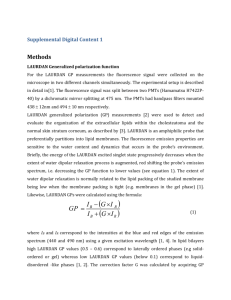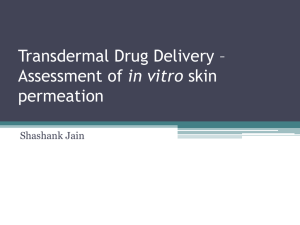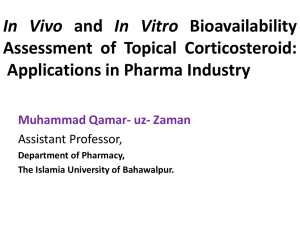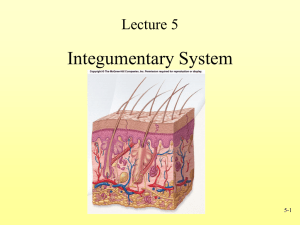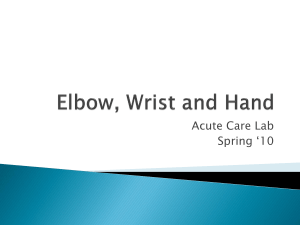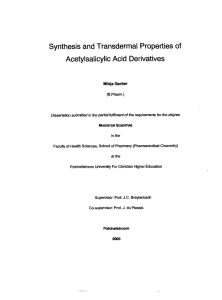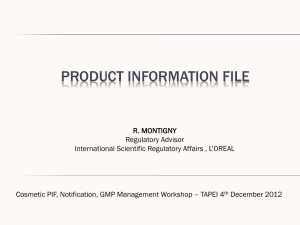Ingen bildrubrik
advertisement
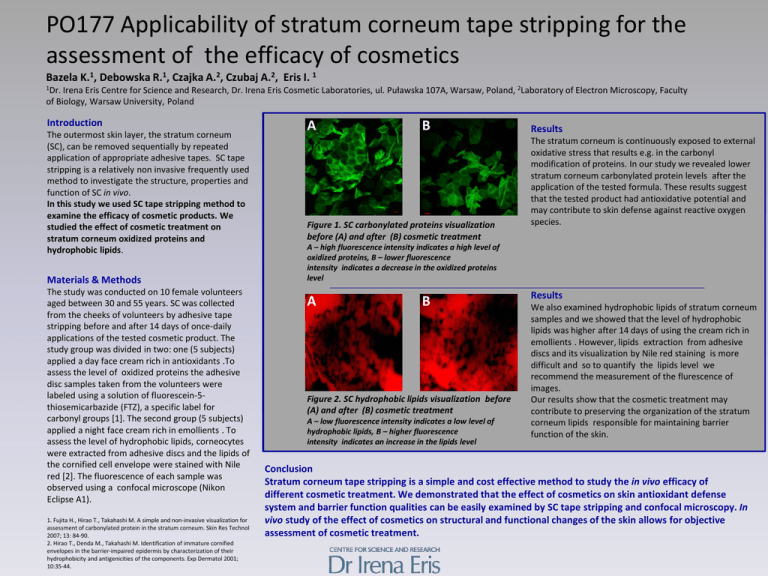
PO177 Applicability of stratum corneum tape stripping for the assessment of the efficacy of cosmetics Bazela K.1, Debowska R.1, Czajka A.2, Czubaj A.2, Eris I. 1 1Dr. Irena Eris Centre for Science and Research, Dr. Irena Eris Cosmetic Laboratories, ul. Puławska 107A, Warsaw, Poland, 2Laboratory of Electron Microscopy, Faculty of Biology, Warsaw University, Poland Introduction The outermost skin layer, the stratum corneum (SC), can be removed sequentially by repeated application of appropriate adhesive tapes. SC tape stripping is a relatively non invasive frequently used method to investigate the structure, properties and function of SC in vivo. In this study we used SC tape stripping method to examine the efficacy of cosmetic products. We studied the effect of cosmetic treatment on stratum corneum oxidized proteins and hydrophobic lipids. Materials & Methods The study was conducted on 10 female volunteers aged between 30 and 55 years. SC was collected from the cheeks of volunteers by adhesive tape stripping before and after 14 days of once-daily applications of the tested cosmetic product. The study group was divided in two: one (5 subjects) applied a day face cream rich in antioxidants .To assess the level of oxidized proteins the adhesive disc samples taken from the volunteers were labeled using a solution of fluorescein-5thiosemicarbazide (FTZ), a specific label for carbonyl groups [1]. The second group (5 subjects) applied a night face cream rich in emollients . To assess the level of hydrophobic lipids, corneocytes were extracted from adhesive discs and the lipids of the cornified cell envelope were stained with Nile red [2]. The fluorescence of each sample was observed using a confocal microscope (Nikon Eclipse A1). 1. Fujita H., Hirao T., Takahashi M. A simple and non-invasive visualization for assessment of carbonylated protein in the stratum corneum. Skin Res Technol 2007; 13: 84-90. 2. Hirao T., Denda M., Takahashi M. Identification of immature cornified envelopes in the barrier-impaired epidermis by characterization of their hydrophobicity and antigenicities of the components. Exp Dermatol 2001; 10:35-44. A B Figure 1. SC carbonylated proteins visualization before (A) and after (B) cosmetic treatment Results The stratum corneum is continuously exposed to external oxidative stress that results e.g. in the carbonyl modification of proteins. In our study we revealed lower stratum corneum carbonylated protein levels after the application of the tested formula. These results suggest that the tested product had antioxidative potential and may contribute to skin defense against reactive oxygen species. A – high fluorescence intensity indicates a high level of oxidized proteins, B – lower fluorescence intensity indicates a decrease in the oxidized proteins level A B Figure 2. SC hydrophobic lipids visualization before (A) and after (B) cosmetic treatment A – low fluorescence intensity indicates a low level of hydrophobic lipids, B – higher fluorescence intensity indicates an increase in the lipids level Results We also examined hydrophobic lipids of stratum corneum samples and we showed that the level of hydrophobic lipids was higher after 14 days of using the cream rich in emollients . However, lipids extraction from adhesive discs and its visualization by Nile red staining is more difficult and so to quantify the lipids level we recommend the measurement of the flurescence of images. Our results show that the cosmetic treatment may contribute to preserving the organization of the stratum corneum lipids responsible for maintaining barrier function of the skin. Conclusion Stratum corneum tape stripping is a simple and cost effective method to study the in vivo efficacy of different cosmetic treatment. We demonstrated that the effect of cosmetics on skin antioxidant defense system and barrier function qualities can be easily examined by SC tape stripping and confocal microscopy. In vivo study of the effect of cosmetics on structural and functional changes of the skin allows for objective assessment of cosmetic treatment.
